What is the role of ERP in Supply Chain Management?
What do Sheng Shiong and Netflix have in common? They both have a strong and robust supply chain system.
Sheng Shiong is a local supermarket chain well loved by Singaporeans. They have a strong and sophisticated supply chain system that is supported by their integrated retail distribution IT system (Enterprise SG 2015).
The same goes for Netflix. Netflix focuses on the digital supply chain, expanding into content creation and distribution at the center of the supply chain. Netflix also gathers data it collects from its users to understand patterns. Then, using machine learning algorithms, it predicts what shows and movies people will want to watch next and recommends accordingly (Netflix Technology Blog, 2017b).
Put simply, supply chain is about delivering the product to the right place, at the right time, at the right quantity to the right consumer.
Having a robust supply chain system in place keeps companies competitive and without it, there could be potential waste of resources, time and overall lack of strategy.
Here’s the secret: Add the genius of ERP software into your supply chain management sauce.
In this article, you’ll learn more about how ERP helps support your supply chain processes in order to achieve increased profit from our Supply Chain resident expert in Aristou- Ang KL. This blog post is part 1 of our 3-part series on Supply Chain, so make sure you check back in so you don’t miss out!
What is Supply Chain Management and why is it important?
A supply chain system consists of organizations, processes, information and resources to send a product to either a manufacturing plant or a customer at the right time, to the right place at the right quantity. Examples of organizations range from: order processing function, warehouse function, production function, procurement function, transportation function, planning function.
With good supply chain management in place, operations can take place at a minimum cost, and working capital required for inventory is efficiently utilized. This means inventory turns are as high as possible, and obsolete inventory as low as possible.
Ultimately, the important goal is to deliver the right product at the right time to the right place.
3 ways your supply chain management can benefit from ERP software
So how does ERP fit into supply chain management?
-
Businesses with multiple locations can utilize cloud computing to reduce the coordination gaps in distance, time and enable ease of collaboration. The data can be kept in a single location or if regulators require a local storage.
-
ERP reduces the need to unnecessarily duplicate storage in multiple places and reduces the risk of misplaced data. This saves time and maintains the standardized approach in all locations.
-
Cloud computing allows immediate data access on the go with multiple devices. This enables flexibility in its usage 24/7, providing the sufficient resources they need wherever they are.
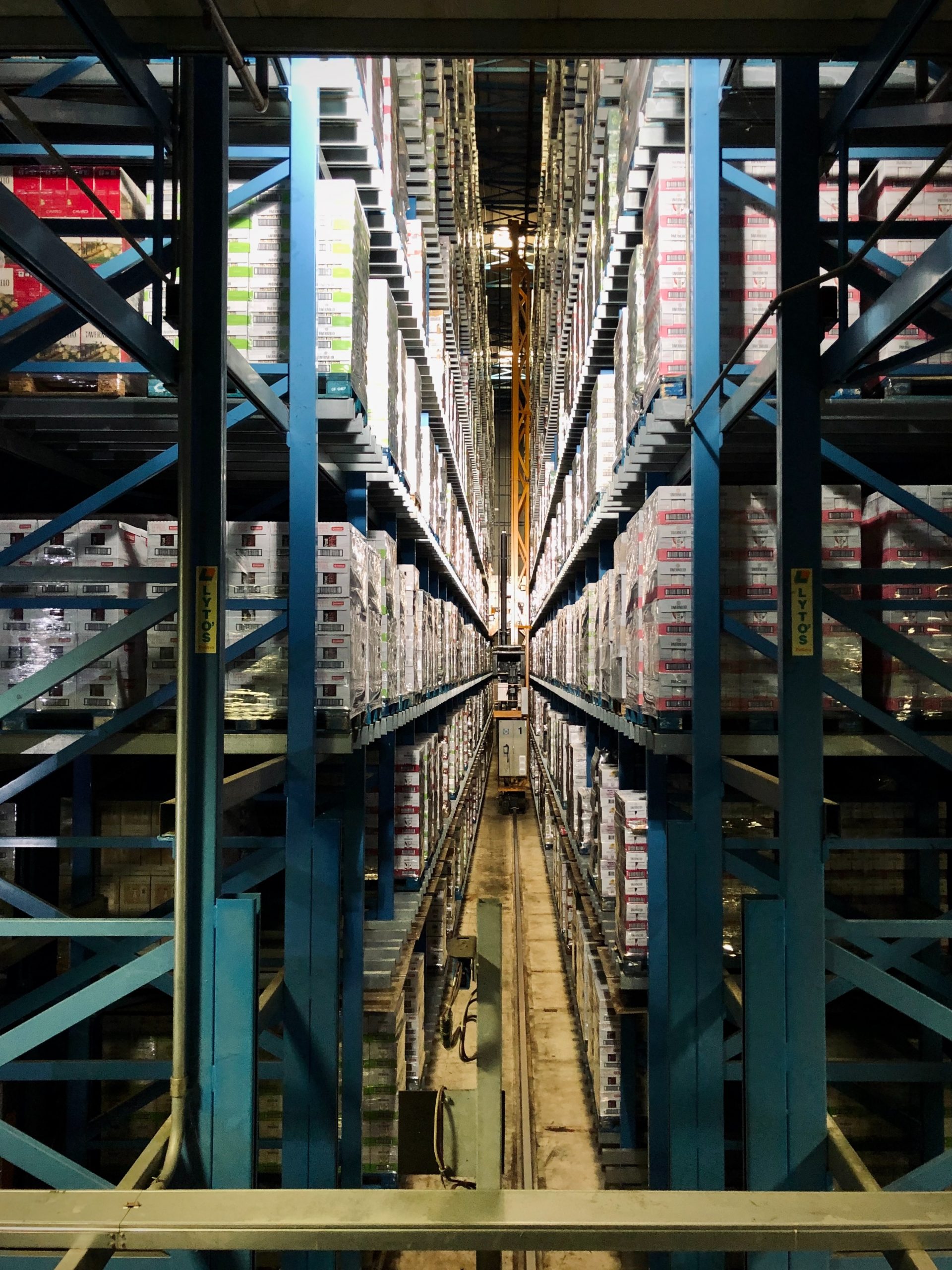
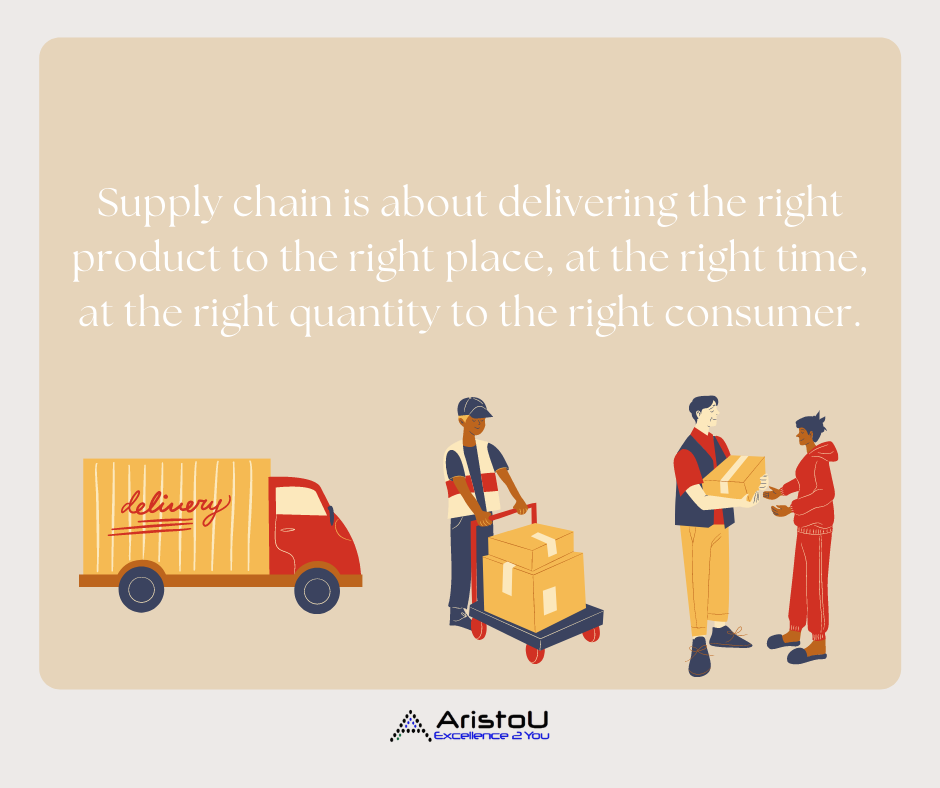
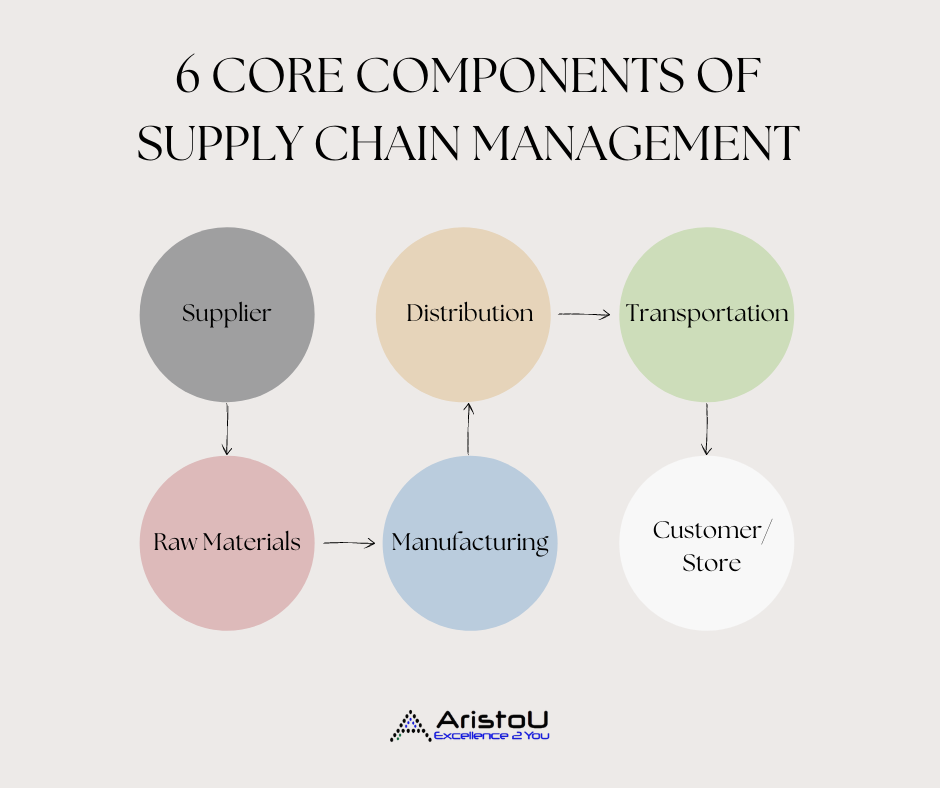
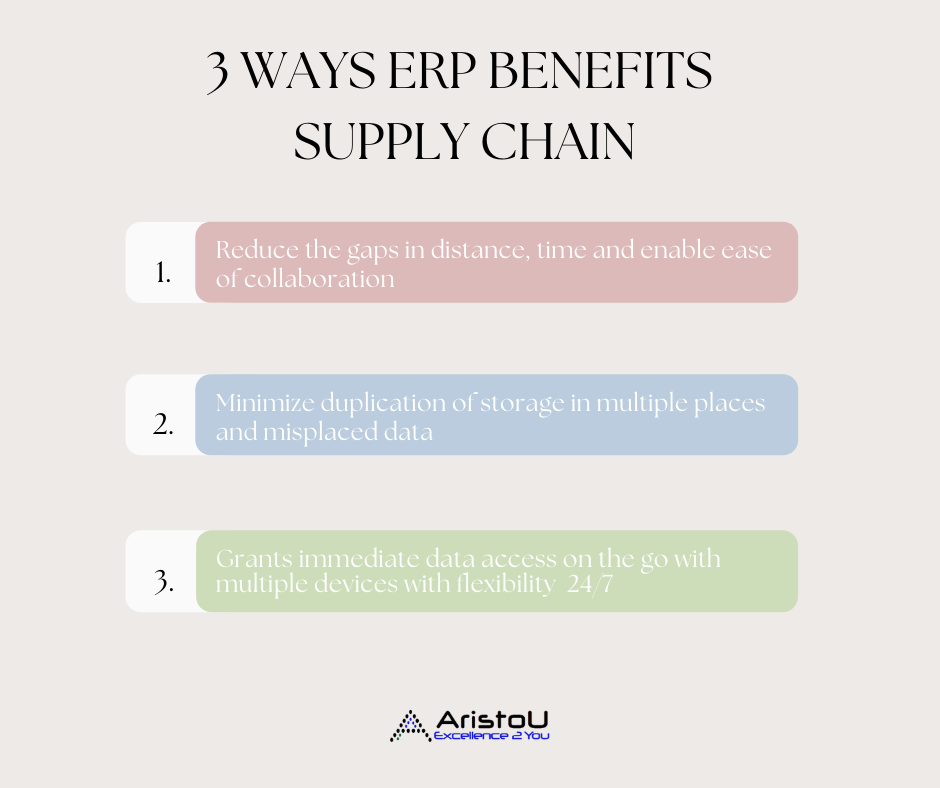
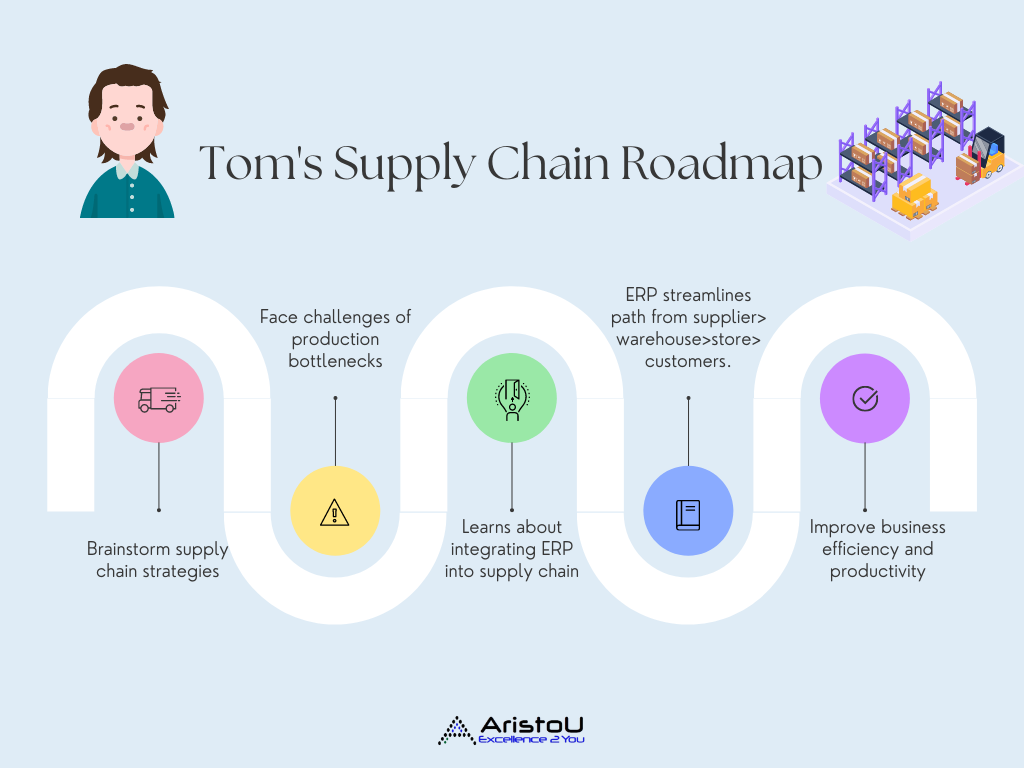
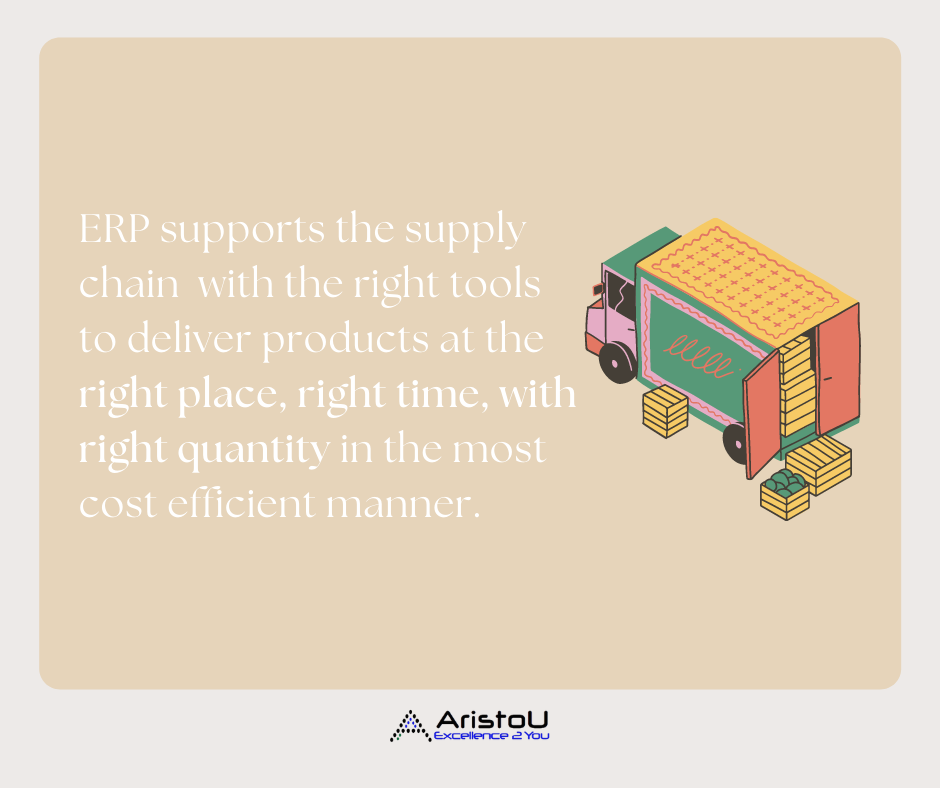







Leave a Reply